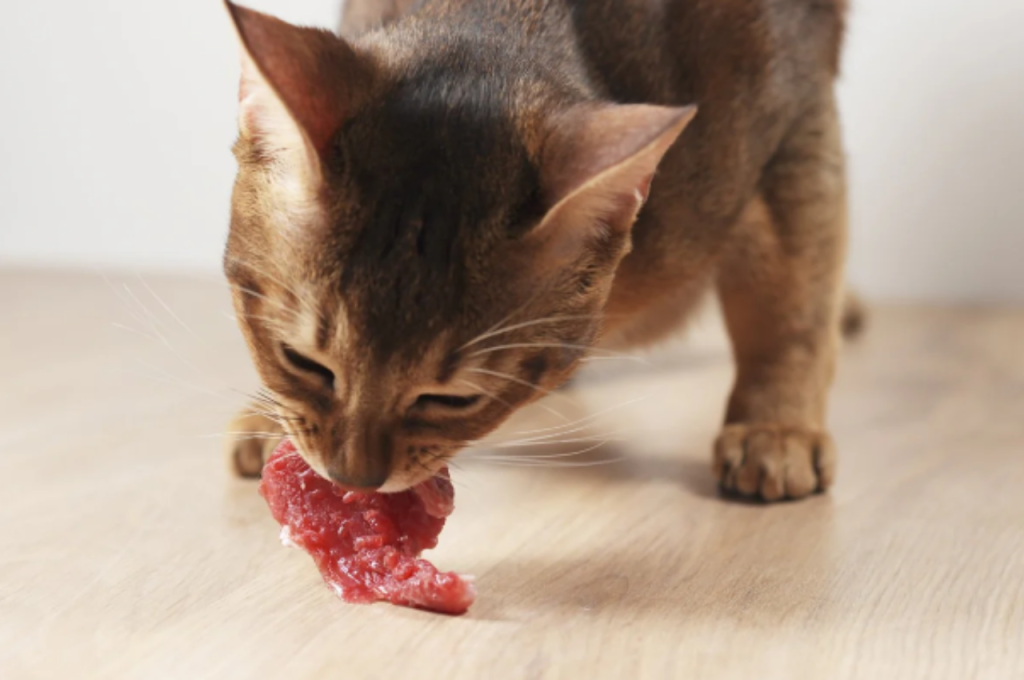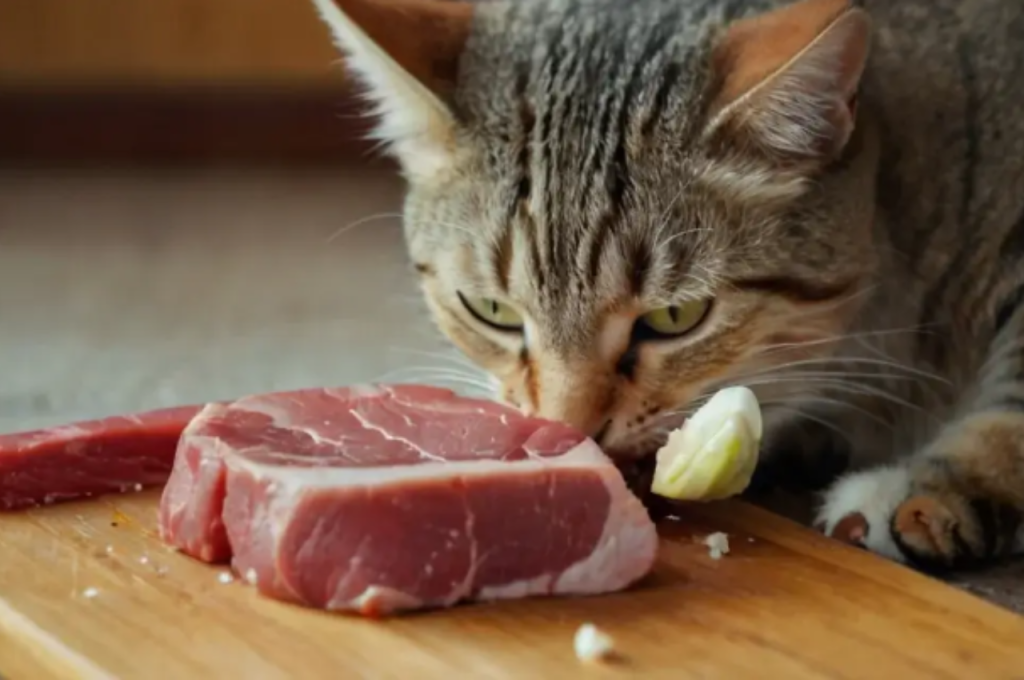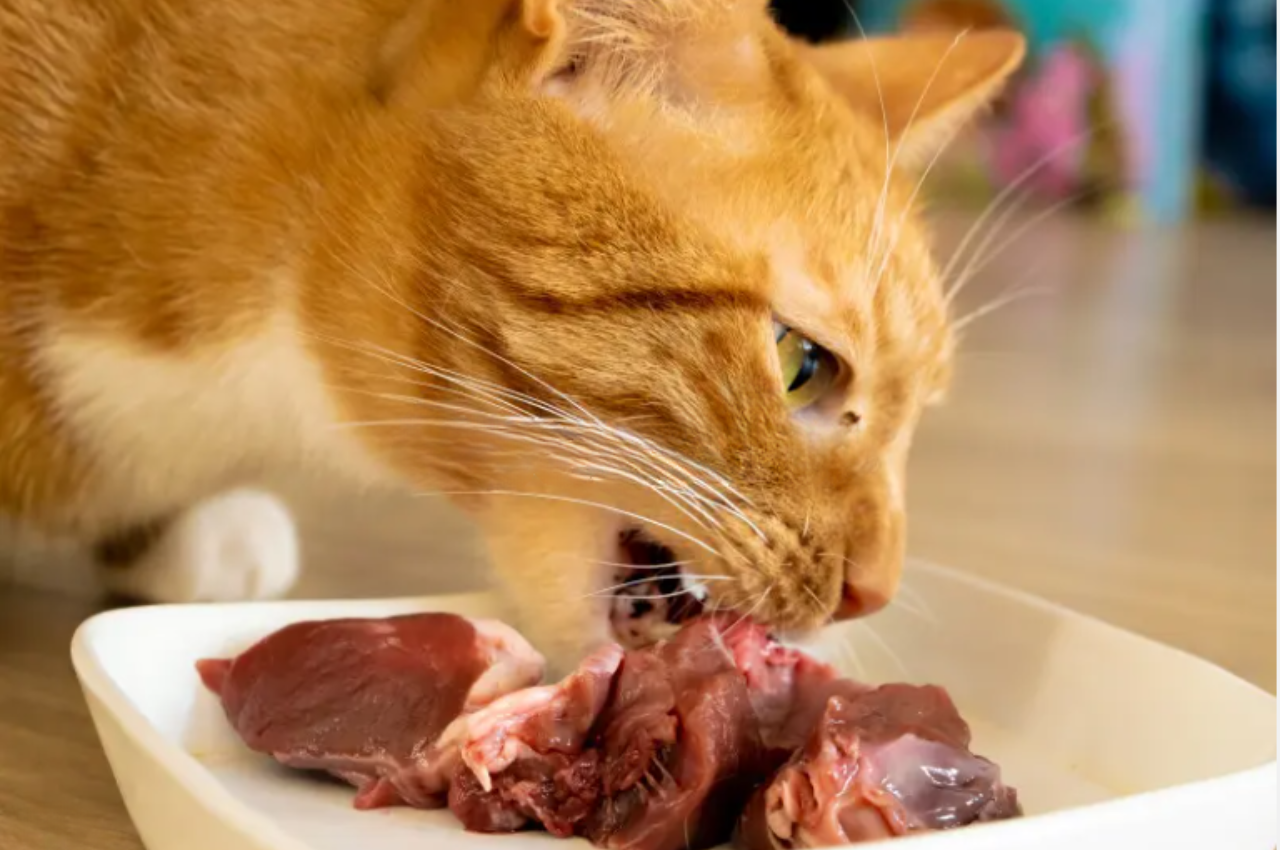Beef liver is a good part of beef for cats as it is high in essential nutrients. Beef is a popular protein source for cats, and finding the right part of beef can be crucial for their health and well-being.
One part of beef that is particularly beneficial for cats is beef liver. Beef liver is highly nutritious and packed with essential vitamins and minerals that are important for the feline diet. It is a rich source of vitamin A, vitamin B12, iron, and protein, making it an excellent choice for cat owners looking to add variety and nutritional value to their pet’s diet.
However, it is essential to note that it should be fed in moderation and cooked thoroughly to prevent any potential food-borne illnesses. By incorporating beef liver into your cat’s diet, you can provide them with a tasty and nutrient-dense meal option that supports their overall health and vitality.
Benefits of Beef for Cats
The benefits of beef for cats are numerous. Beef provides cats with a high-quality protein source and is rich in essential nutrients that contribute to their overall health and well-being. Let’s explore these benefits in more detail.

High-quality Protein Source
Beef is an excellent source of high-quality protein for cats. Protein is essential for the growth, repair, and maintenance of body tissues, including muscles, skin, and hair. It also helps support a strong immune system and aids in the production of enzymes and hormones.
Feeding your cat beef can ensure that they receive sufficient protein for their daily needs. The amino acids found in beef are essential for cats, as they are unable to produce some of these amino acids on their own.
Rich in Essential Nutrients
In addition to being a great source of protein, beef is rich in essential nutrients required for a cat’s overall health. These include:
- Vitamins: Beef contains vitamins such as vitamin B12, which is important for nerve function and the production of red blood cells. It also provides vitamin B6, which aids in metabolizing protein and maintaining brain health.
- Minerals: Beef is a natural source of minerals like iron, zinc, and selenium. Iron is crucial for the production of hemoglobin and oxygen transport in the body, while zinc supports immune function and wound healing. Selenium acts as an antioxidant, protecting the body against oxidative stress.
Including beef in your cat’s diet can help ensure they receive these essential nutrients, promoting their overall well-being.
Safe Cuts of Beef for Cats
When it comes to feeding your feline friend, it’s important to be mindful of the types of meat you offer. Understanding which part of beef is safe for cats can help provide them with a nutritious and balanced diet. Let’s explore the safe cuts of beef for cats, focusing on lean cuts and cooked and unseasoned options.
Lean Cuts
Lean cuts of beef, such as sirloin or tenderloin, are excellent choices for cats due to their high protein content. These cuts are low in fat and can be easily digested by our feline companions. When preparing beef for your cat, ensure that any visible fat is trimmed off to prevent digestive issues. Additionally, lean cuts provide essential nutrients like iron and B vitamins, contributing to your cat’s overall well-being and energy levels.
Cooked and Unseasoned Options
When offering beef to your cat, it’s crucial to serve it cooked and unseasoned. Cooking the beef ensures that it is free from harmful bacteria that could potentially harm your cat’s digestive system. Avoid seasoning the beef with ingredients like salt, garlic, or onion, as these can be toxic to cats. Opt for simple cooking methods such as boiling or grilling without the addition of any seasoning or sauces. This will ensure that your cat can safely enjoy the nutritional benefits of beef without any harmful additives.
Health Considerations
When considering what part of beef is good for cats, it’s vital to take into account the health considerations. While beef can be a great source of protein and nutrients for cats, there are important factors to consider to ensure it promotes their overall well-being.
Potential Risks of Feeding Beef to Cats
Feeding raw beef to cats presents a potential risk of bacterial contamination, such as E. coli and salmonella, which can lead to digestive issues and foodborne illnesses. Additionally, certain cuts of beef contain a higher fat content, which, if consumed in excess, can contribute to obesity and other related health issues in cats.
Balanced Diet With Beef Incorporation
When incorporating beef into a cat’s diet, it’s essential to prioritize lean cuts and ensure that it’s properly cooked to minimize the risk of bacterial contamination. Furthermore, beef should be served in moderation to maintain a balanced diet for cats, supplementing their primary protein source with other nutrients essential for their health.
Preparing Beef for Cats
When it comes to feeding our feline friends, providing them with a balanced and nutritious diet is of utmost importance. While cats are obligate carnivores, meaning they need meat in their diet to thrive, it can be tricky to determine which part of beef is good for cats. To ensure that your furry companion gets the most out of their beefy meal, it is crucial to prepare it in a way that is safe and beneficial for their health.

Cooking Methods
When it comes to cooking beef for your cat, it’s essential to choose a method that preserves the nutritional value of the meat while making it easily digestible for your feline friend. Here are a few cooking methods that you can consider:
- Baking: Baking beef for cats is a simple and effective way to retain the meat’s natural flavors and nutrients. By baking it at a moderate temperature, you can ensure that the beef is cooked thoroughly without losing its nutritional value.
- Boiling: Boiling beef is another option that can be beneficial for cats. This cooking method helps in removing excess fat and makes the meat more tender, making it easier for your little whisker buddy to chew and digest.
- Grilling: Grilling beef can be a great way to add a smoky flavor to the meat, making it more enticing for your cat. However, it’s important to ensure that the meat is cooked well and not charred, as charred meat can be harmful to your cat’s health.
Avoiding Harmful Ingredients
While preparing beef for your cat, it is crucial to avoid using harmful ingredients or spices that may be detrimental to their well-being. Here are a few ingredients that should be avoided:
- Onions and Garlic: These ingredients can be toxic to cats and should be avoided at all costs. Their consumption can lead to severe health issues, including anemia.
- Salt and Seasonings: Excessive salt and other spices can be harmful to cats. It is best to keep the seasoning minimal to prevent any adverse effects on their health.
- Bones: While dogs may enjoy chewing on bones, it’s important to note that beef bones can be hazardous for cats. They can splinter and cause choking or internal injuries.
By adhering to these guidelines and preparing beef for cats safely and appropriately, you can ensure that your furry friend enjoys a delicious and nutritious meal while staying healthy. Remember, always consult with your veterinarian before introducing any new foods into your cat’s diet.
Introducing Beef to Cats
When it comes to introducing beef to cats, it’s essential to know which part of the beef is good for them. Lean cuts of beef, such as sirloin or tenderloin, can be suitable for cats when cooked and served in moderation.
However, it’s crucial to consult with a veterinarian before adding beef to your cat’s diet.
Cats are obligate carnivores and enjoy a diet rich in proteins, making beef a great addition to their meals. When it comes to introducing beef to your feline friend, a gradual transition is crucial to avoid digestive issues.
Transitioning Techniques
- Start by mixing small amounts of cooked beef with your cat’s current food.
- Gradually increase the amount of beef over a week to ensure a smooth transition.
- Observe your cat for any signs of digestive upset during the transition period.
Monitoring Response
- Look for symptoms like vomiting or diarrhea which could indicate an adverse reaction.
- Ensure your cat is well-hydrated and maintains a healthy weight while on the new diet.
- Consult your veterinarian if you notice any unusual changes in your cat’s behavior or health after introducing beef.
| Key Points | Actions |
| Gradual Transition | Mix small amounts of cooked beef with current food. |
| Monitoring Signs | Watch for vomiting, diarrhea, or changes in behavior. |
Alternatives to Beef for Cats
When it comes to choosing the best protein sources for your feline friend, numerous alternatives to beef can provide the necessary nutrients for their diet.
Variety in Protein Sources
Cats can benefit from a diverse range of protein sources beyond beef. Opt for chicken, turkey, fish, or lamb to provide the essential amino acids needed for a balanced diet.
- Chicken: High in protein and low in fat, making it a nutritious and digestible option for cats.
- Turkey: Another lean protein source that can help support your cat’s muscle development.
- Fish: Rich in Omega-3 fatty acids, fish can promote healthy skin and coat in cats.
- Lamb: A novel protein choice, lamb can be beneficial for cats with food sensitivities.
Consulting A Veterinarian
Before making any changes to your cat’s diet, consulting a veterinarian is crucial. They can provide personalized recommendations based on your cat’s specific needs and health requirements.

- Veterinarian Guidance: Ensure your vet approves any new protein sources to prevent dietary imbalances.
- Feeding Guidelines: Veterinarians can offer feeding guidance and recommend portion sizes to maintain your cat’s ideal weight.
- Health Considerations: If your cat has health issues, a vet can suggest suitable protein sources to support their well-being.
Conclusion
Beef can be a healthy addition to a cat’s diet. However, it is important to choose the right part of beef to ensure the cat’s well-being. Lean cuts such as beef tenderloin or sirloin can provide essential nutrients without the excessive fat content.
It is always advisable to consult with a veterinarian to determine the appropriate portion sizes and frequency of feeding beef to your feline companion. Ultimately, a balanced and varied diet is key to keeping your cat happy and healthy.
